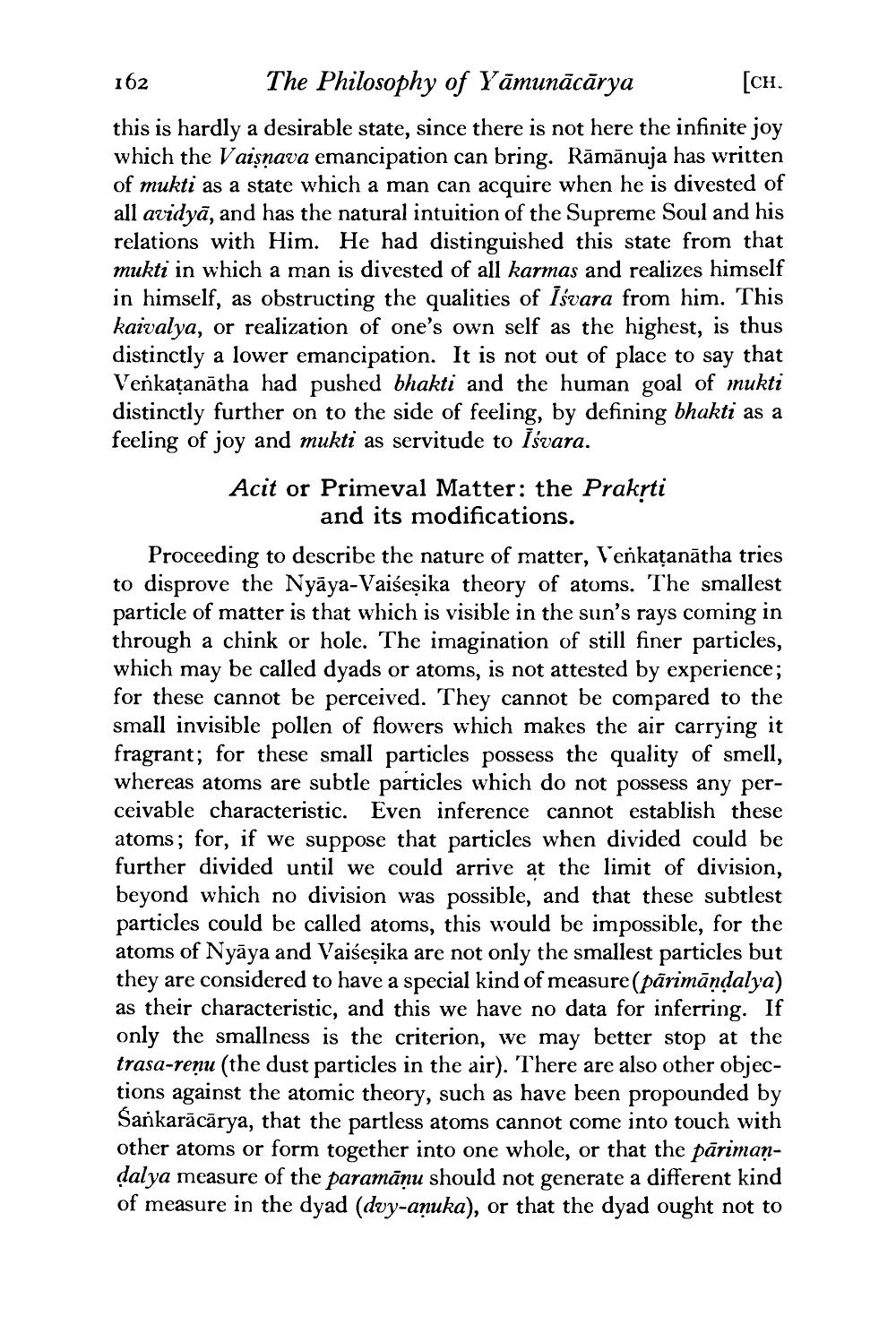________________
162
The Philosophy of Yamunācārya
[CH.
this is hardly a desirable state, since there is not here the infinite joy which the Vaisnava emancipation can bring. Rāmānuja has written of mukti as a state which a man can acquire when he is divested of all avidya, and has the natural intuition of the Supreme Soul and his relations with Him. He had distinguished this state from that mukti in which a man is divested of all karmas and realizes himself in himself, as obstructing the qualities of Isvara from him. This kaivalya, or realization of one's own self as the highest, is thus distinctly a lower emancipation. It is not out of place to say that Venkatanatha had pushed bhakti and the human goal of mukti distinctly further on to the side of feeling, by defining bhakti as a feeling of joy and mukti as servitude to Isvara.
Acit or Primeval Matter: the Prakṛti and its modifications.
Proceeding to describe the nature of matter, Venkaṭanatha tries to disprove the Nyaya-Vaiśeṣika theory of atoms. The smallest particle of matter is that which is visible in the sun's rays coming in through a chink or hole. The imagination of still finer particles, which may be called dyads or atoms, is not attested by experience; for these cannot be perceived. They cannot be compared to the small invisible pollen of flowers which makes the air carrying it fragrant; for these small particles possess the quality of smell, whereas atoms are subtle particles which do not possess any perceivable characteristic. Even inference cannot establish these atoms; for, if we suppose that particles when divided could be further divided until we could arrive at the limit of division, beyond which no division was possible, and that these subtlest particles could be called atoms, this would be impossible, for the atoms of Nyaya and Vaiseṣika are not only the smallest particles but they are considered to have a special kind of measure (pārimāṇḍalya) as their characteristic, and this we have no data for inferring. If only the smallness is the criterion, we may better stop at the trasa-reņu (the dust particles in the air). There are also other objections against the atomic theory, such as have been propounded by Sankarācārya, that the partless atoms cannot come into touch with other atoms or form together into one whole, or that the parimandalya measure of the paramāņu should not generate a different kind of measure in the dyad (dvy-anuka), or that the dyad ought not to




